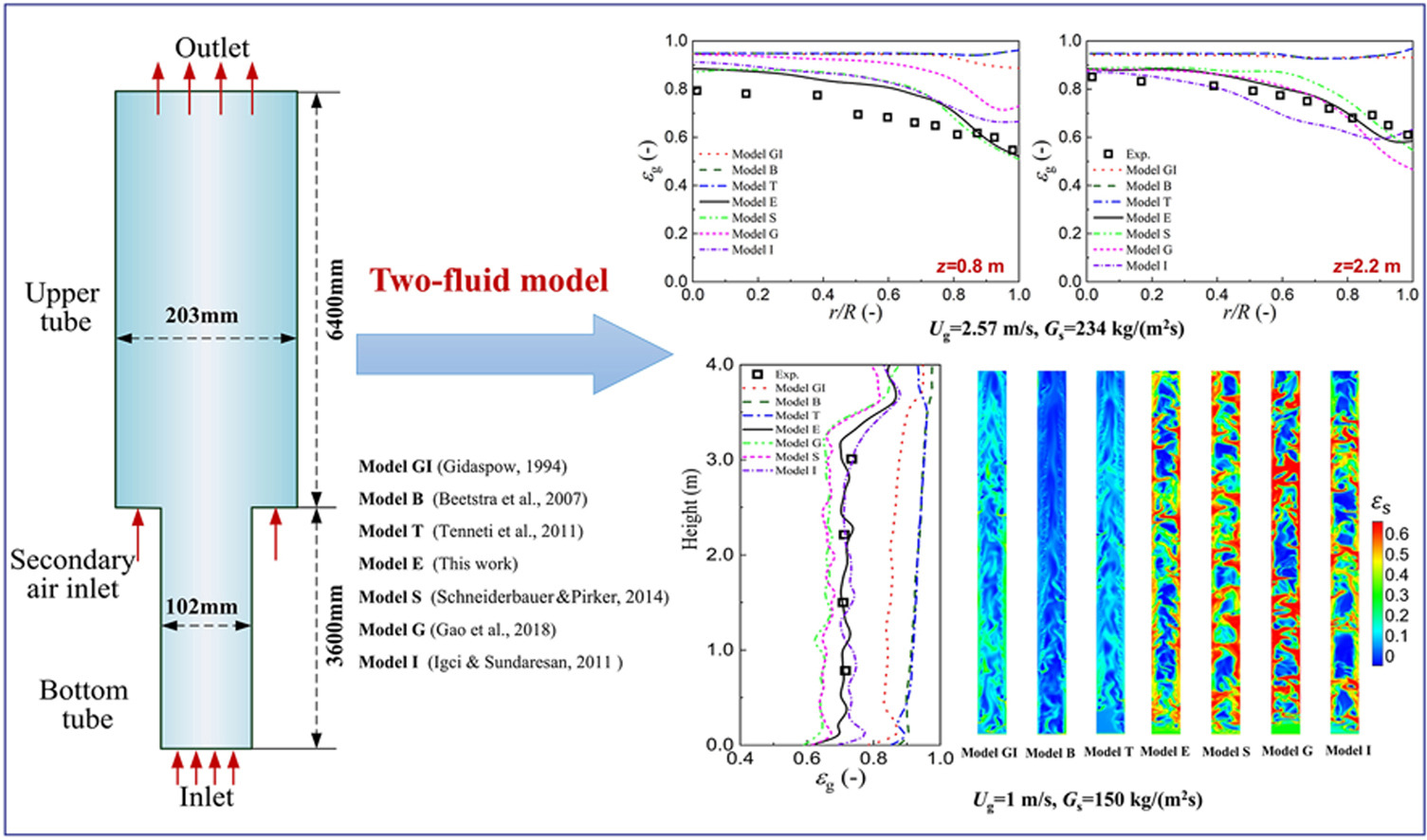• Eulerian CFD simulation of circulating-turbulent fluidized beds was performed.
• Simulations using seven drag models were carried out and compared.
• Homogeneous models underestimate the bed density and RNI of voidage.
• Mesoscale drag models achieve consistent results with the experimental data.
• EMMS model based on PBM outperforms others with the lowest errors.
The novel circulating turbulent fluidized bed (CTFB) technology has found wide applications in various processes owing to its high solid circulation rate and low backmixing. However, up to now, only a limited number of CFD simulation studies on this type of reactor can be found in the literature. Moreover, there is currently no guidance available for selecting appropriate subgrid drag models that take into account the impact of mesoscale structures. In this work, a two-fluid model incorporating seven different drag models include homogeneous drag models, filtered models, and EMMS-based drag models was employed to conduct a systematic investigation into the hydrodynamics of CTFB reactors. It was found that the flow structure in the CTFB reactor differs significantly from conventional fast fluidized beds, exhibiting relatively weaker radial heterogeneity and attenuated near-wall particle downward flows. Comparative analysis demonstrates that the homogeneous drag models fail to predict reasonable hydrodynamics consistent with the experiments. In contrast, the mesoscale drag models show satisfactory performance in reproducing solid concentration profiles, while additional marker variables should be considered in the drag models to enhance the prediction accuracy of particle velocity. The EMMS-based drag model with an advanced conservation equation for cluster size achieves better accuracy in predicting both solid concentration and velocity distributions. Nevertheless, future model development should address wall boundary effects to enhance mesoscale drag applicability in CTFB simulations.

